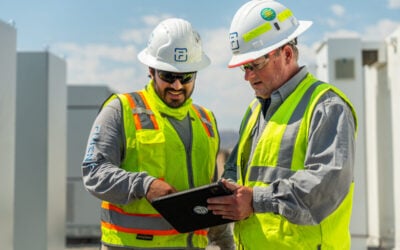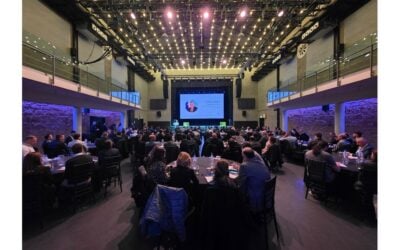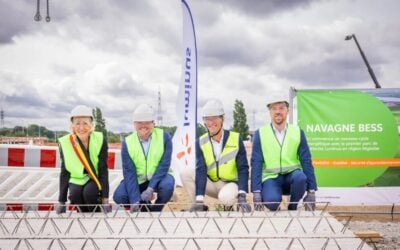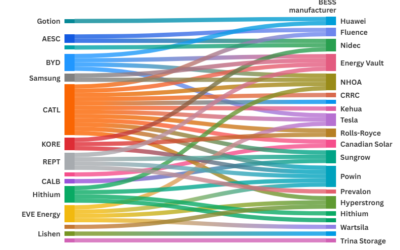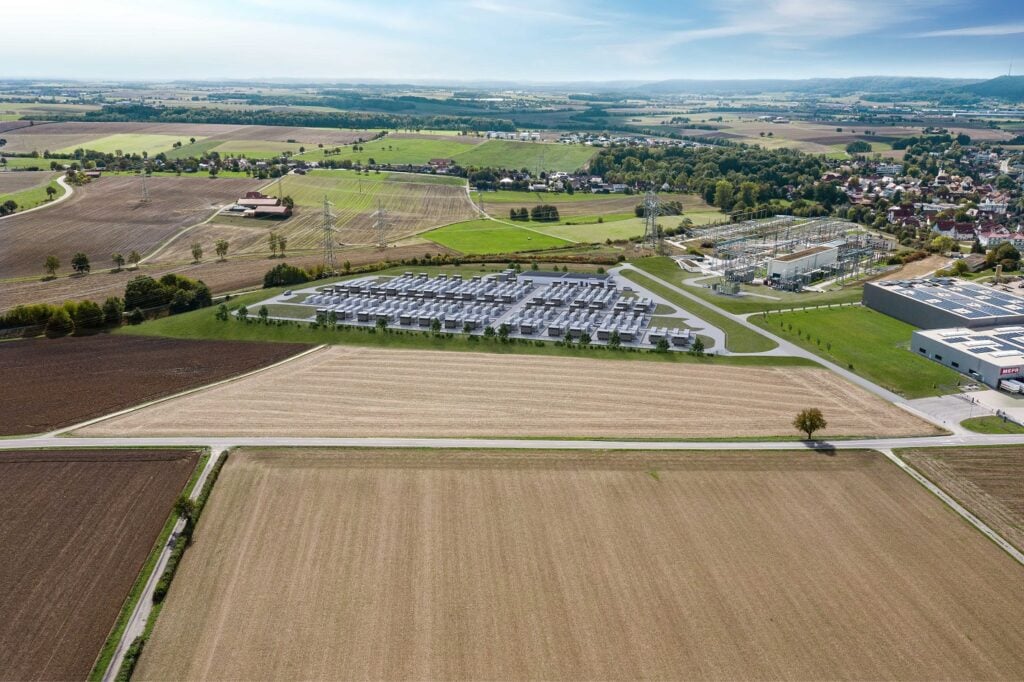
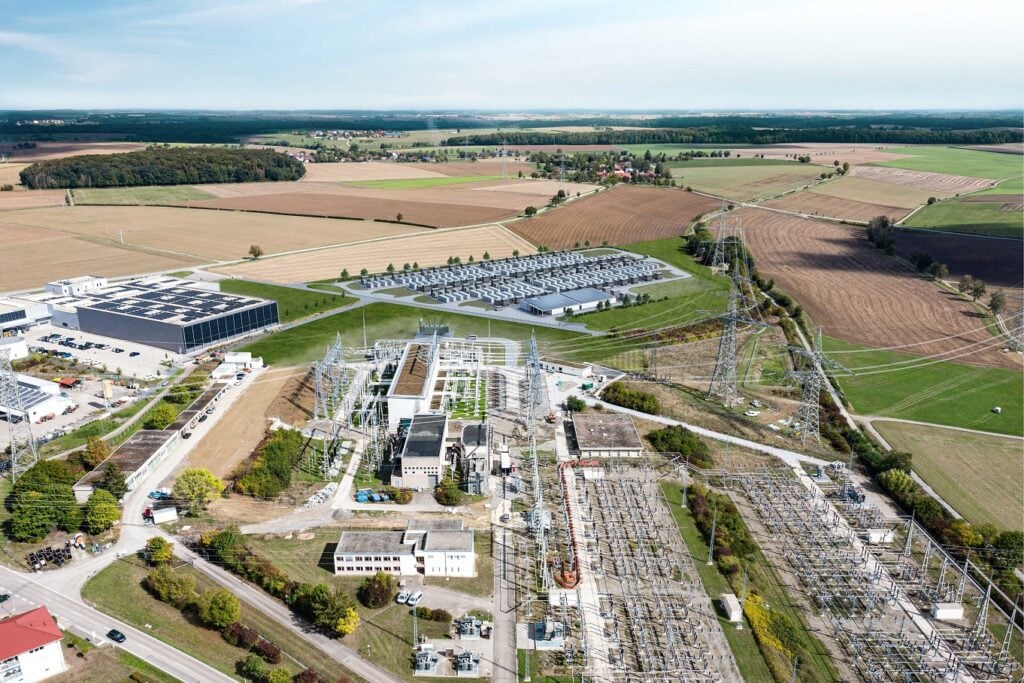
Fluence’s launch of a battery storage solution targeted at transmission network projects speaks to the high value of an as-yet underserved market, company representatives have said.
The global energy storage system integrator and energy services provider has just put ‘Ultrastack’ onto the market. Evolved from the company’s current sixth generation battery energy storage system (BESS) product range, it is designed to meet the high technical requirements of transmission system operators (TSOs).
Enjoy 12 months of exclusive analysis
- Regular insight and analysis of the industry’s biggest developments
- In-depth interviews with the industry’s leading figures
- Annual digital subscription to the PV Tech Power journal
- Discounts on Solar Media’s portfolio of events, in-person and virtual
In Europe, the concept of ‘storage-as-transmission’ is “having a material foothold”, Fluence VP of EMEA sales and market development Brian Perusse told Energy-Storage.news in an interview.
This is evidenced by two high-profile projects the company has underway in the continent: a portfolio of four equally-sized 50MW/50MWh BESS installations on the Lithuanian grid which is nearing completion, and a 250MW/250MWh project with TransnetBW, one of Germany’s TSOs, which Fluence got to working on in October last year.
On the occasion of Ultrastack’s unveiling last week, Perusse had said that the type of projects it is designed for require even higher technical standards for things like system uptime and cybersecurity than most other BESS projects. This is because the customers – grid operators – will rely on it as a piece of “critical grid infrastructure” to keep the lights on and prevent blackouts and brownouts.
This value is something that European grid operators do recognise. ENTSO-E, the European Network of Transmission System Operators, offered its take on the European Commission’s Electricity Market Design, which is currently being reformed.
ENTSO-E represents 39 grid operators in 35 EU and non-EU Member State countries in Europe. It said that the reforms needed to incentivise the acceleration of adoption of energy storage to add flexibility and other key attributes to a secure and decarbonised electricity system for the continent.
Within the EMEA region alone, Fluence is present in 14 countries, and has 77 grid-scale BESS projects under construction or already in operation, totalling about 1,400MW/2,000MWh.
With so many projects already, and presumably a pipeline of opportunities that continues to grow as the adoption of renewable energy does, why take aim at a segment that has so much more exacting needs and high standards to attain?
Transmission: ‘a challenge nobody talks about’
There are two main reasons for this, Perusse said. The first being that as a mission-driven company working to accelerate the transition to sustainable energy, the importance of storage-as-transmission is fundamentally relevant to Fluence’s strategy.
In the first six months of 2022, the cost of redispatching power in Germany was €2.231 billion (US$2.44 billion), close to the €2.3 billion on redispatching costs for the whole of 2021. Meanwhile, investment into power grids is forecast by BloombergNEF to soar into the multiple trillions of dollars globally as this century nears its halfway-point.
Ultrastack’s advanced functionalities enable BESS use cases that address transmission level challenges during that energy transition, like grid requirements that are continually evolving, maintaining system stability, congestion on network infrastructure and the need to aggregate distributed generation and load assets.
From a business point of view, that means its also a big market, Perusse said. To be “relevant on the transmission sector”, storage-as-transmission-assets will generally be in the range of hundreds of megawatts per project.
“So there’s a real value,” Perusse said, but conversely, although they come with high technical requirements to meet, storage-as-transmission-asset (SATA) projects are also often shorter duration projects than front-of-meter BESS as a replacement for gas peaker plants, for example.
The sizing of a project of this type may be large at a megawatt-scale, “but it doesn’t require a tonne of batteries”.
“In a supply-constrained environment too, you’re using slightly less amount of batteries to extract or to deliver a sort of ‘outsized value’ to the markets you’re in.”
The value of energy storage to defer the cost of investment in transmission – and distribution – networks has often been talked about. It may be finally gaining traction now in Europe, as Fluence is finding, and there are other projects in development or proposal stage in Australia and New York, to name two, but it has taken a long time.
Energy-Storage.news has to date reported on just a handful of storage as transmission or distribution investment deferral – often referred to as a ‘non-wires alternative’ (NWA) to infrastructure investment – BESS projects, which tend to come after a lot of work to originate. Most recently, a study commissioned by trade group NY-BEST found that New York’s transmission network planning needs to incorporate energy storage, a seeming blind spot for the state’s lawmakers and regulators that have otherwise been keen to embrace the various roles of storage.
Perusse’s colleague Julian Jansen, director of growth and market development for Fluence in the EMEA region, said that although European Union (EU) targets for renewable energy deployment have been raised significantly since the Russian invasion of Ukraine, the transmission of that energy has been a largely neglected piece in the formation of the bloc’s strategy.
Battery storage was largely being used in Europe to provide frequency regulation until recently. It still is, but the energy crisis sparked, or perhaps made worse, by the war made the business case for energy storage to trade energy on the wholesale market much stronger.
“As you scale up those renewables and you become less reliant on a secure source and secure price source of natural gas, as well as decommissioning your coal-fired power plants, and in countries like Germany and Belgium, nuclear power plants, what you start seeing is that [the] volatility we saw is not just an extraordinary event, given the current geopolitical challenges, but actually, it is a glimpse into the future as we move into a higher renewable [energy] system,” Jansen said.
The RePowerEU strategy formulated by the EU to reduce reliance on Russian fossil fuels calls for 600GW of new solar PV and 510GW of new wind by 2030. As that buildout of renewables accelerates, the value of storage will remain high.
“Then you start having these new applications [for energy storage], advanced pieces around the transmission system. Because the challenge is there, that nobody’s talking about. Everyone’s talking about wholesale markets. Nobody’s thinking: ‘How do we get electricity from A to B?’ And that’s where the transmission system comes in. So to me, this is the wider change that has happened across Europe,” Jansen said.

